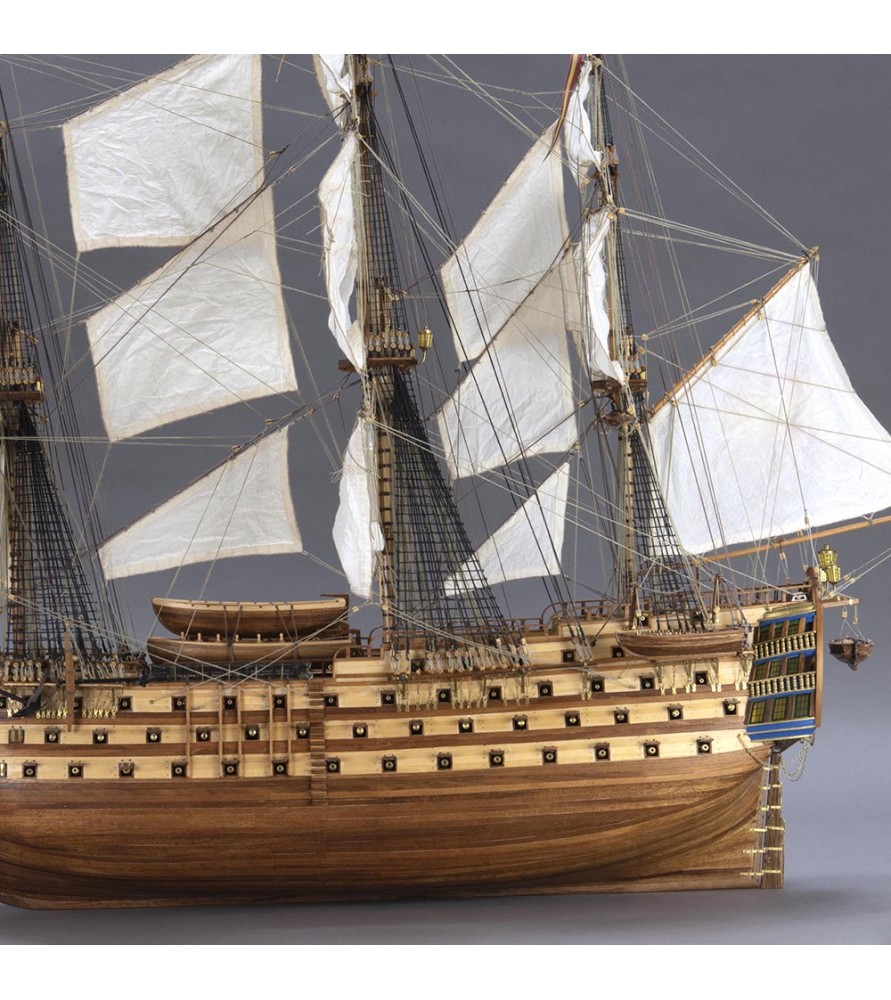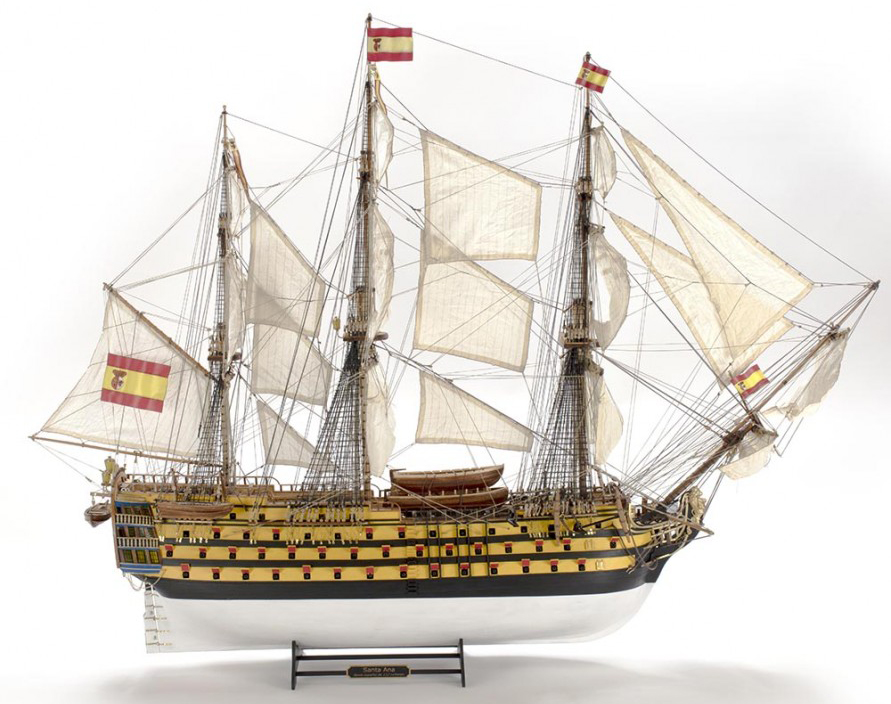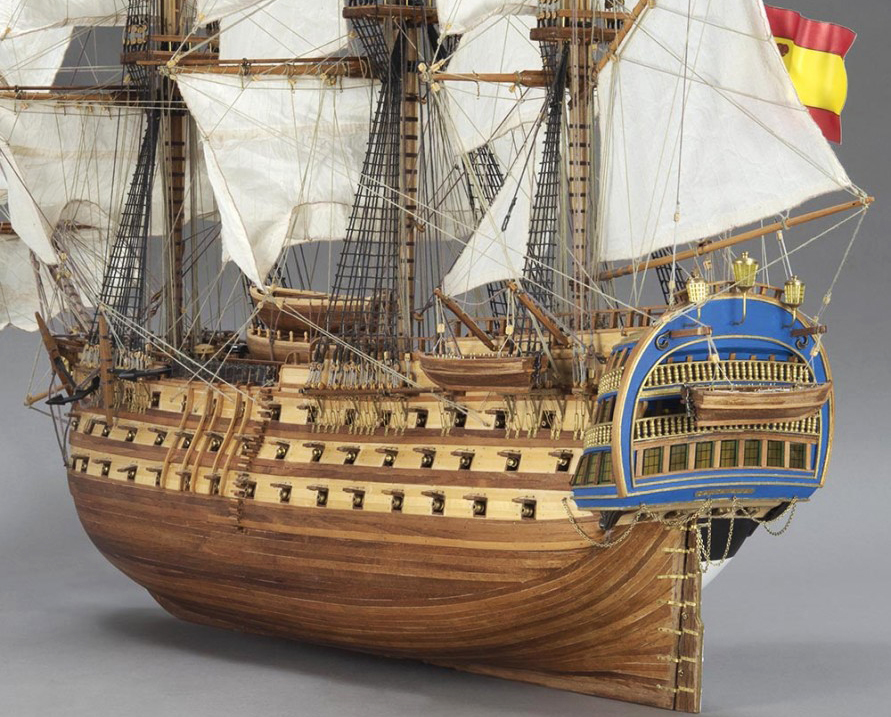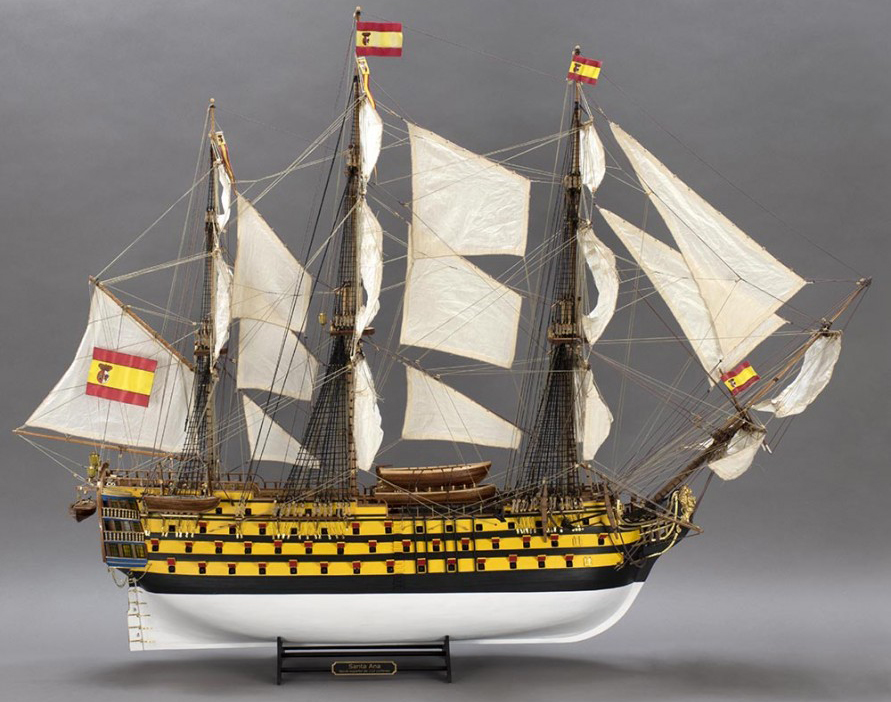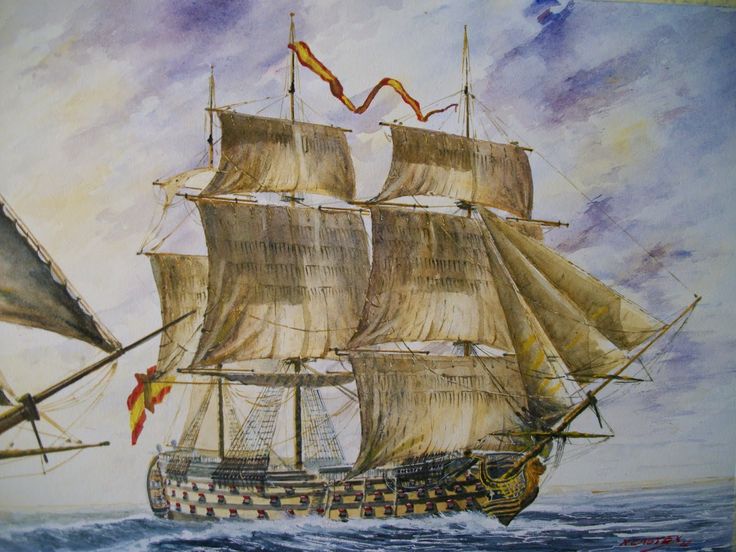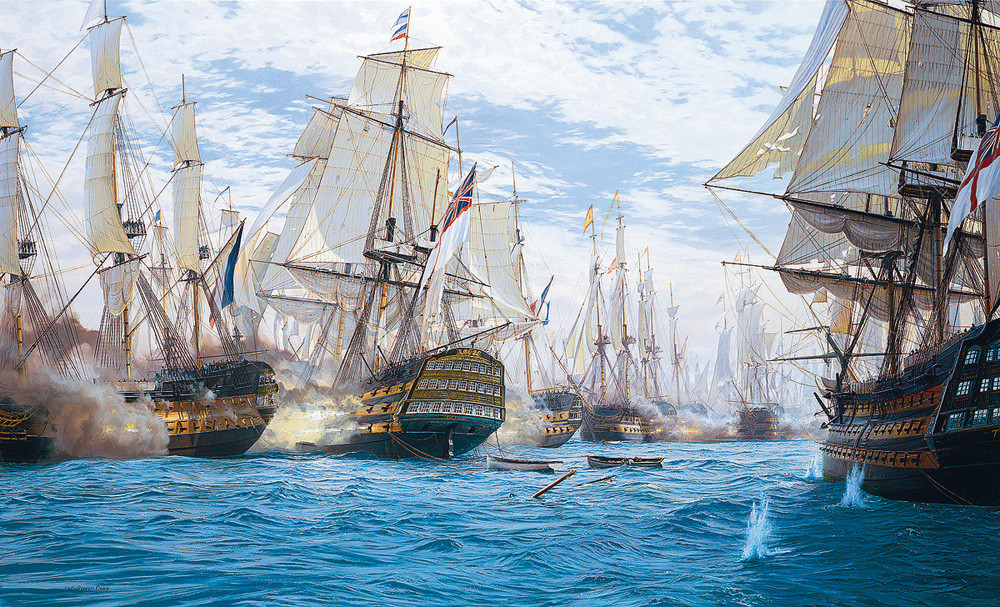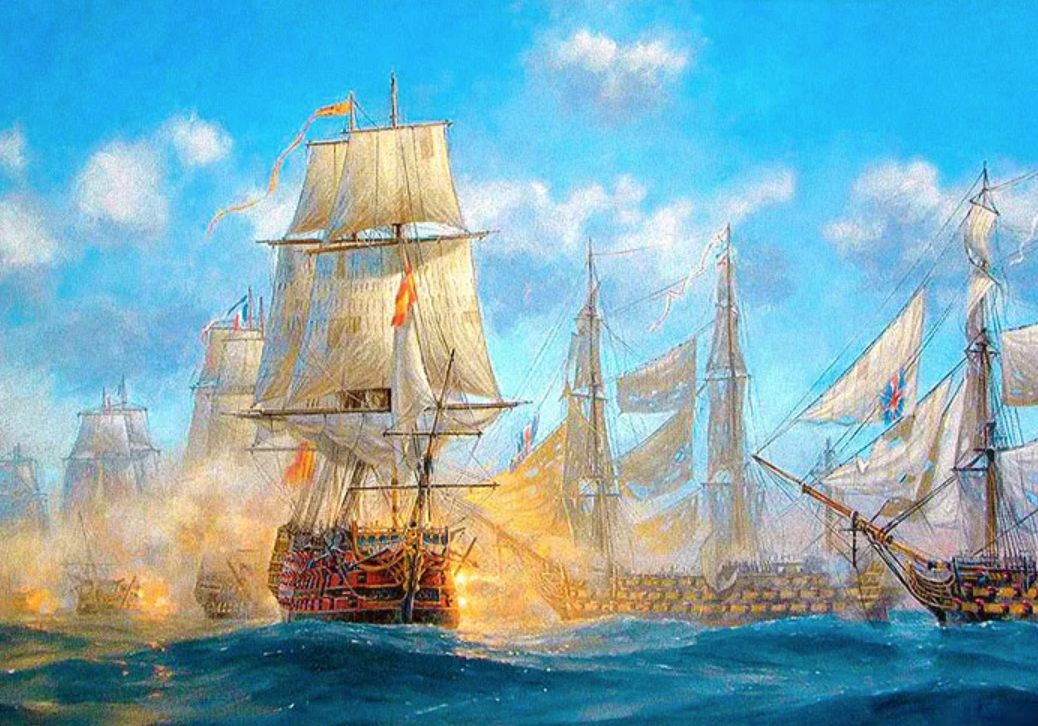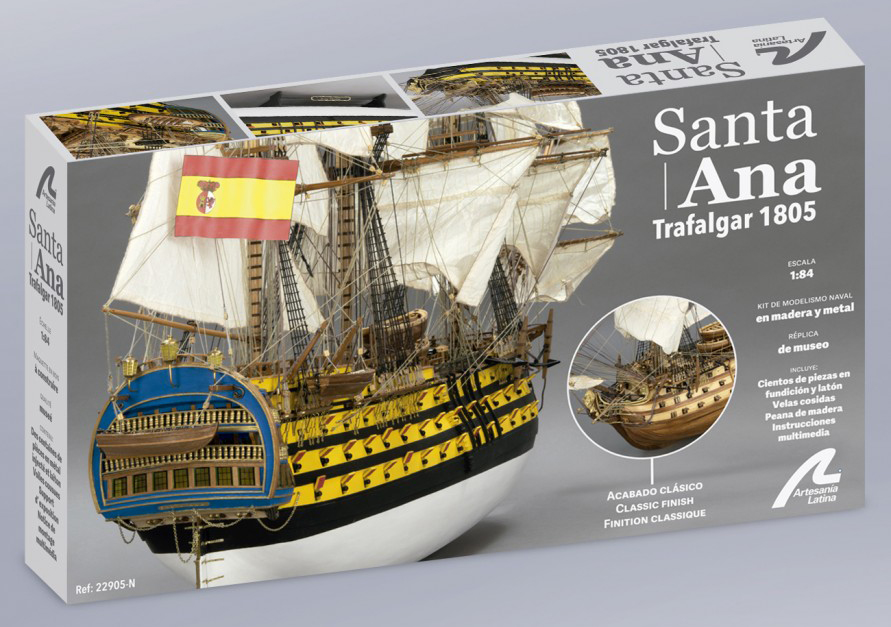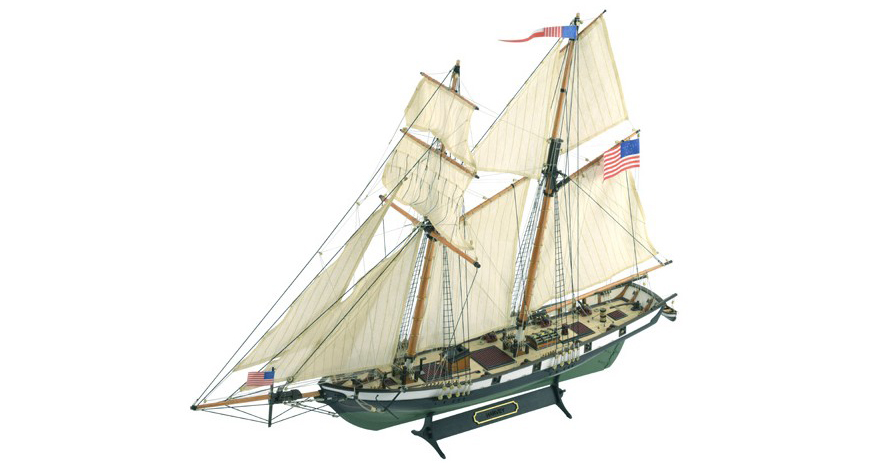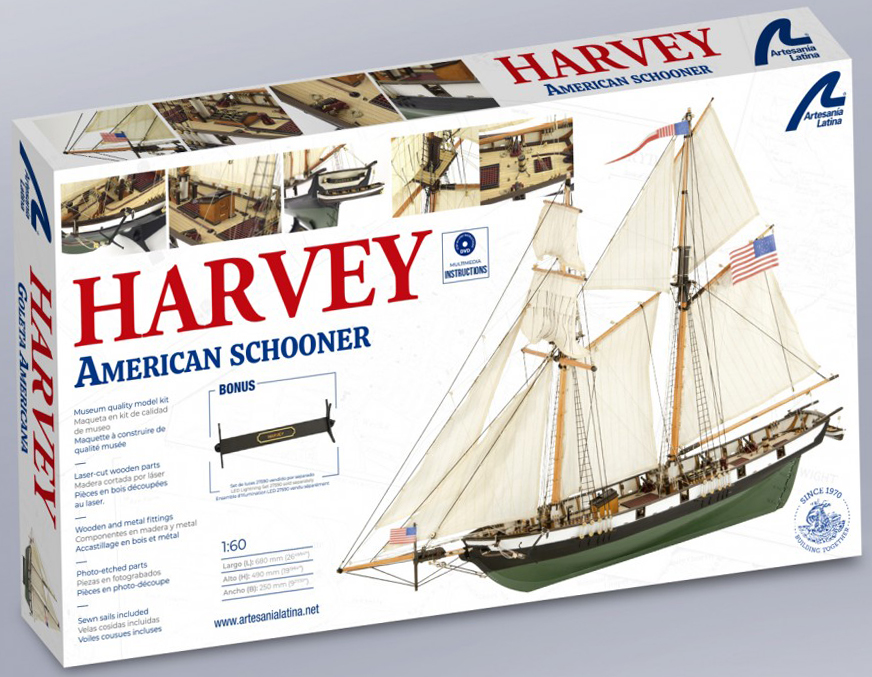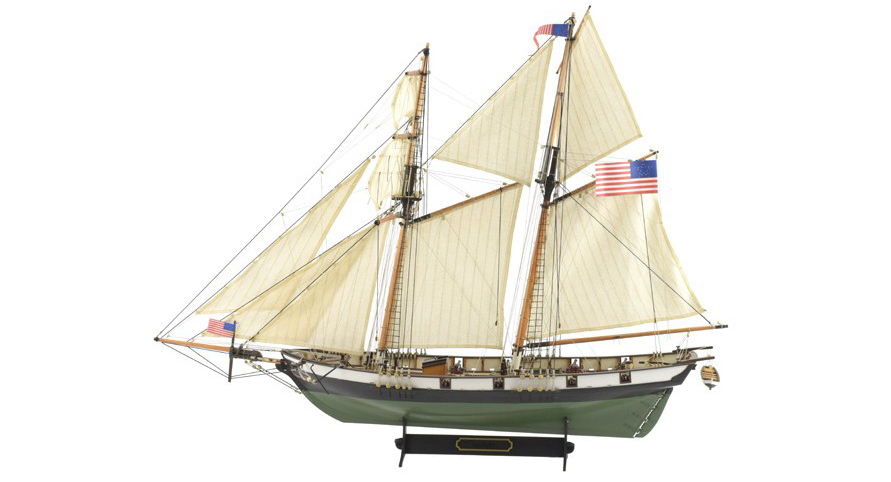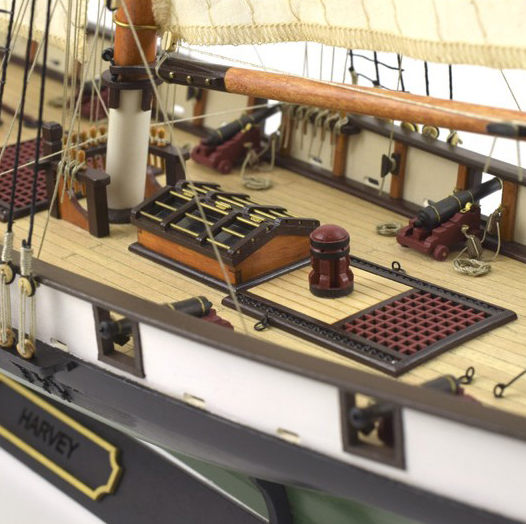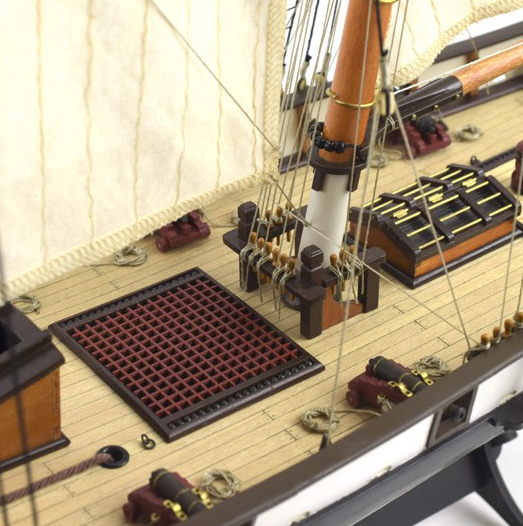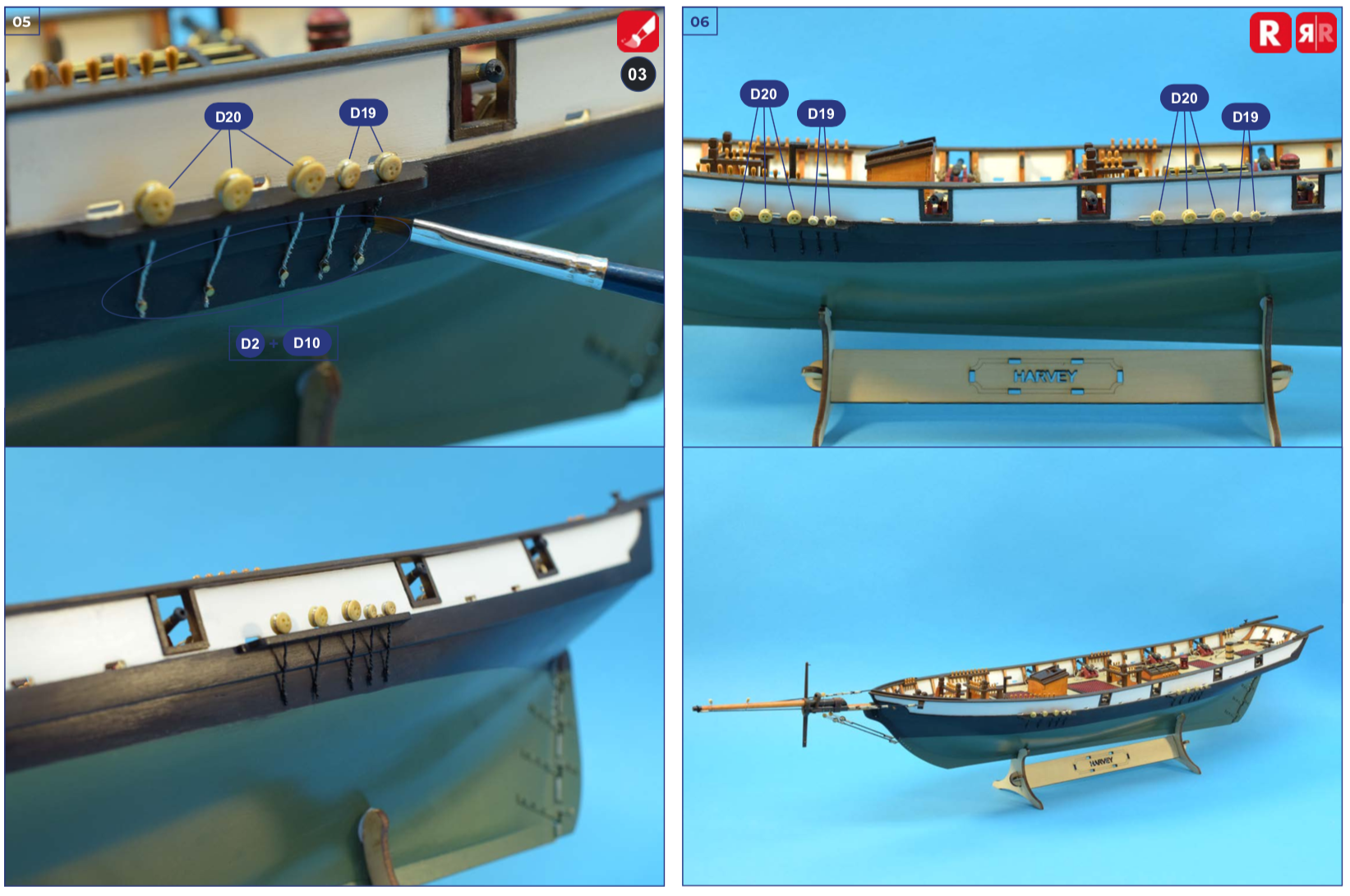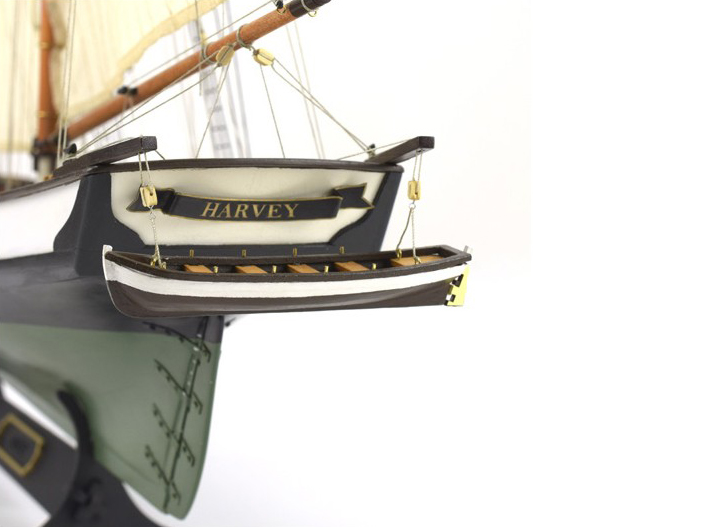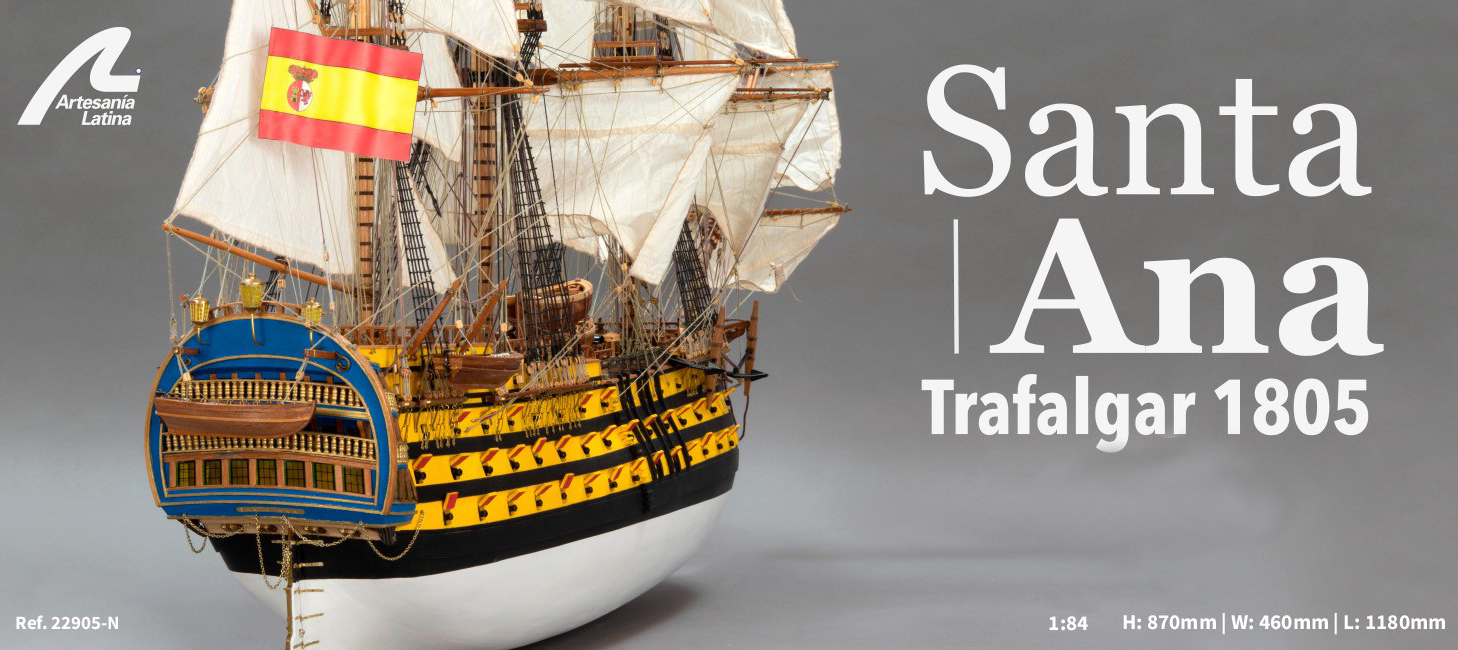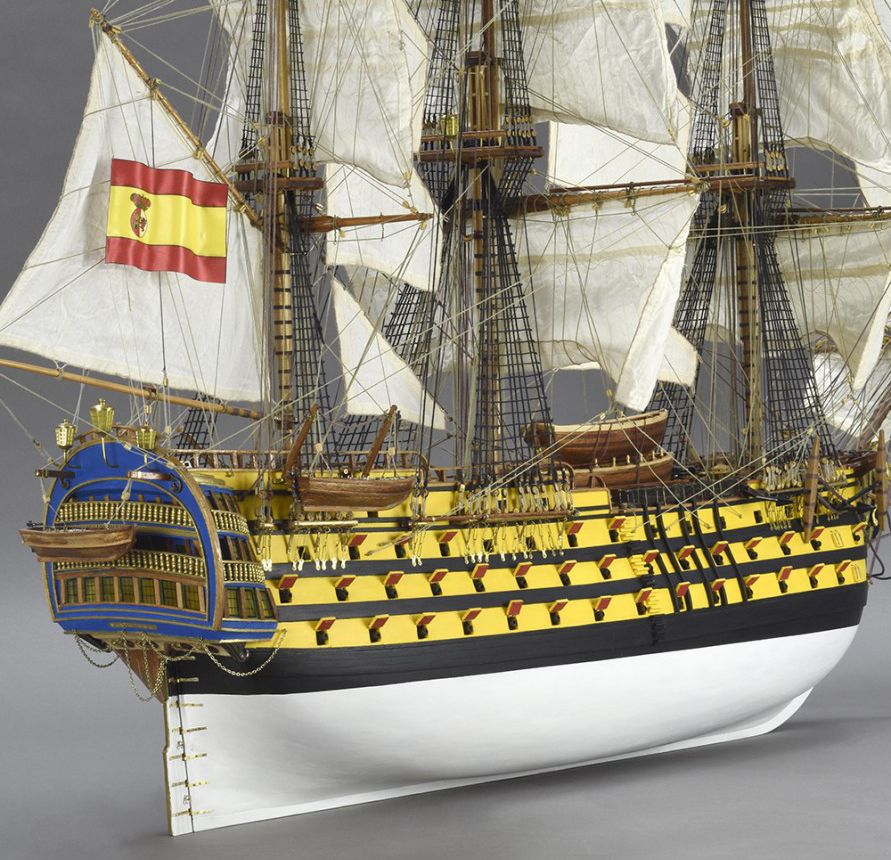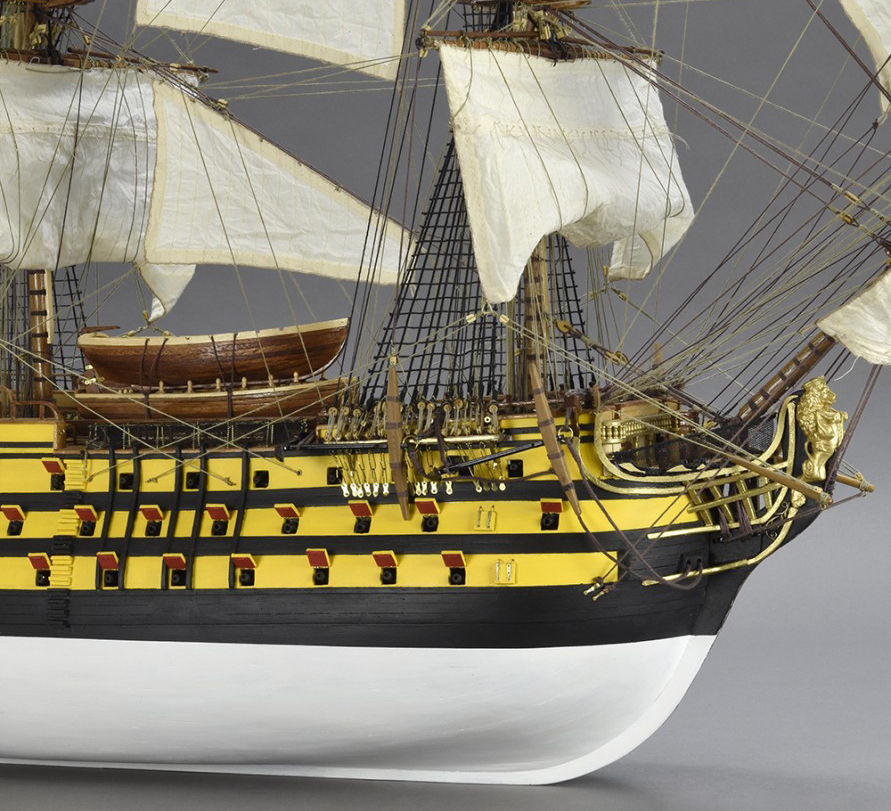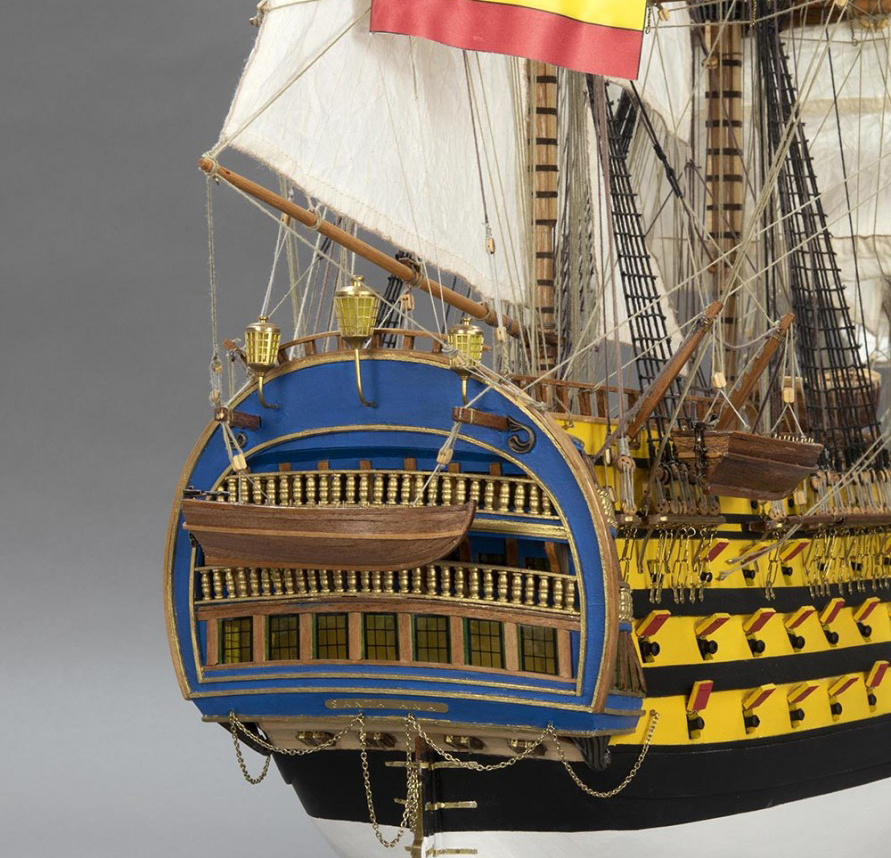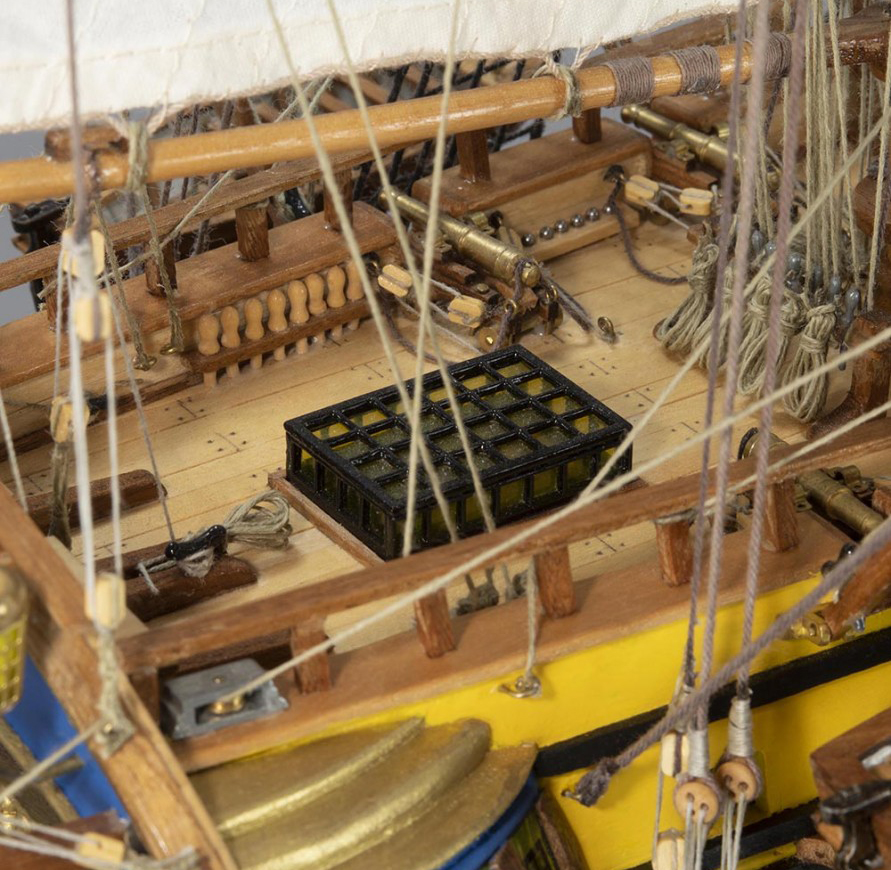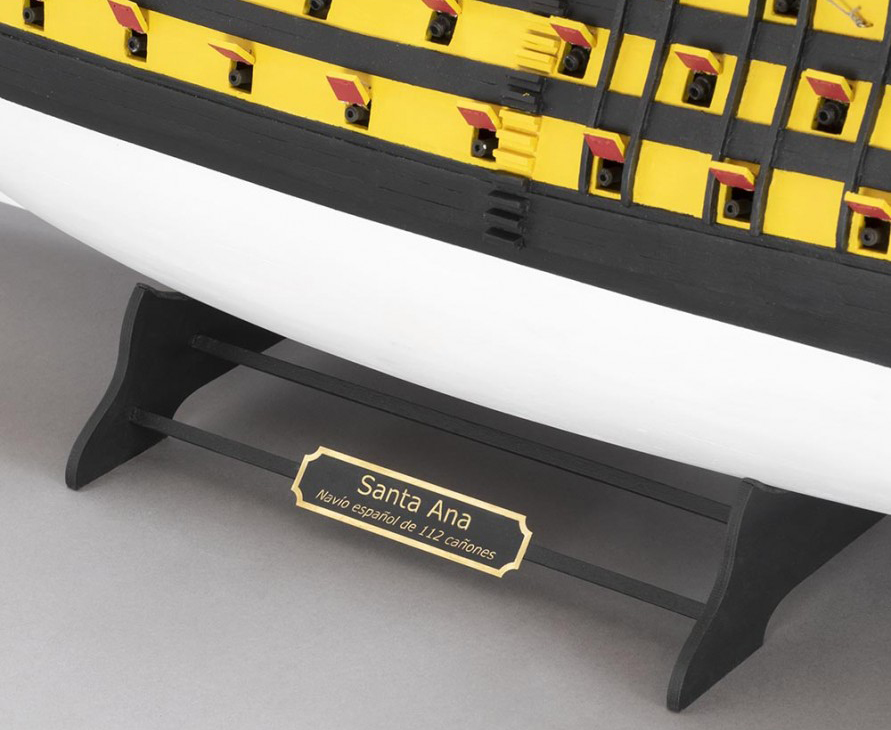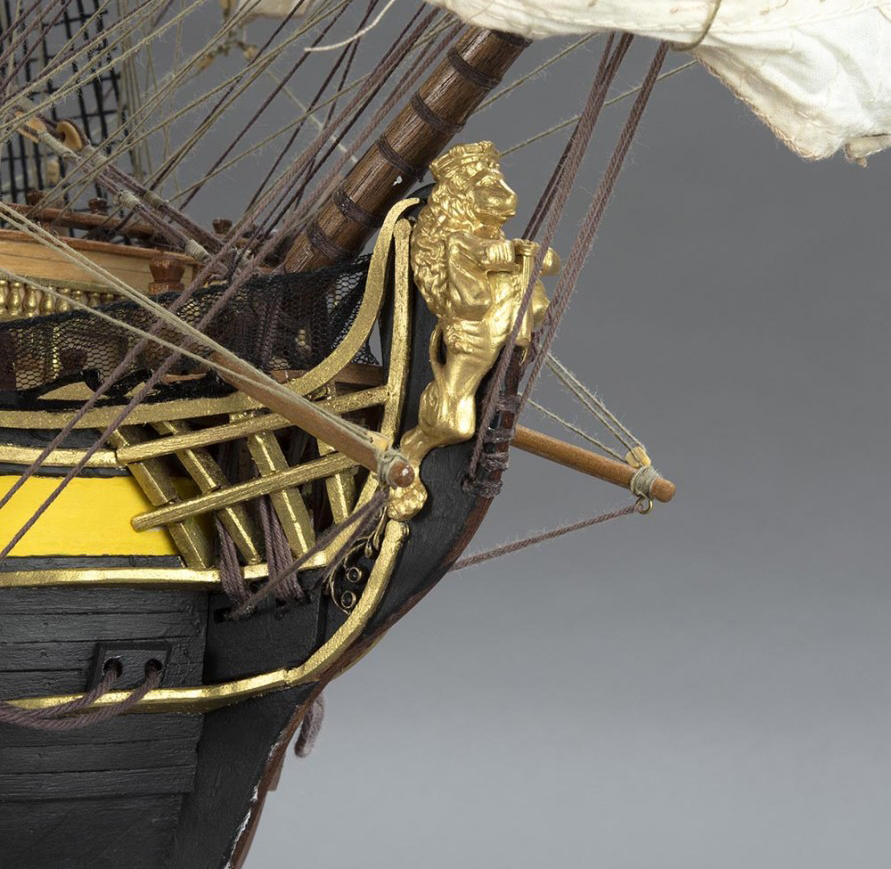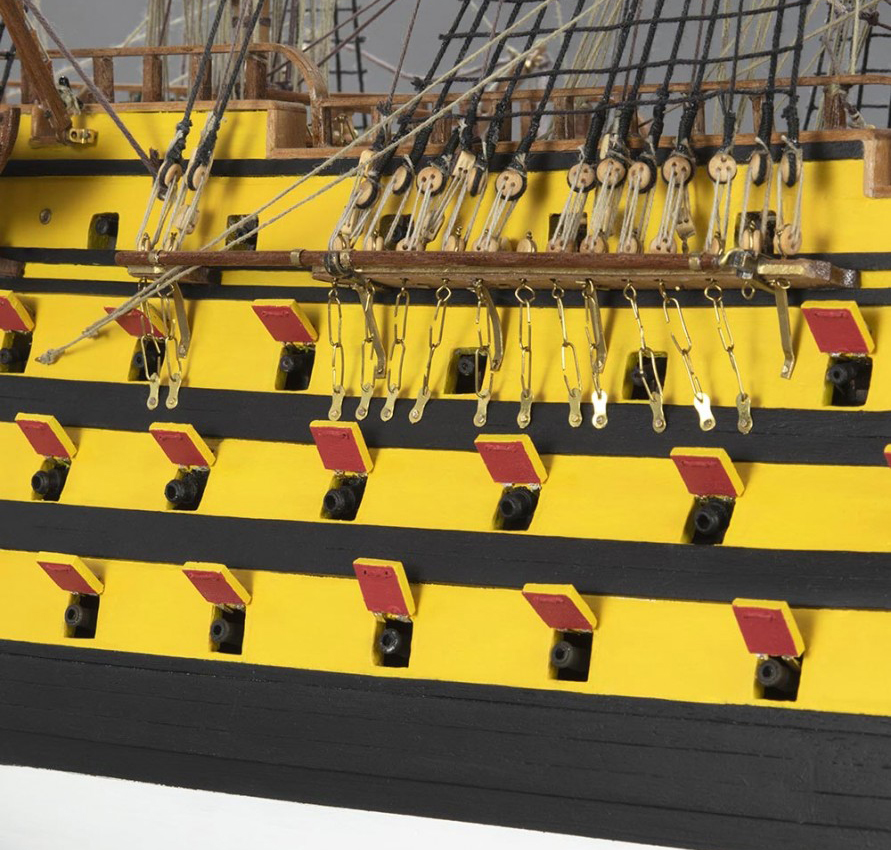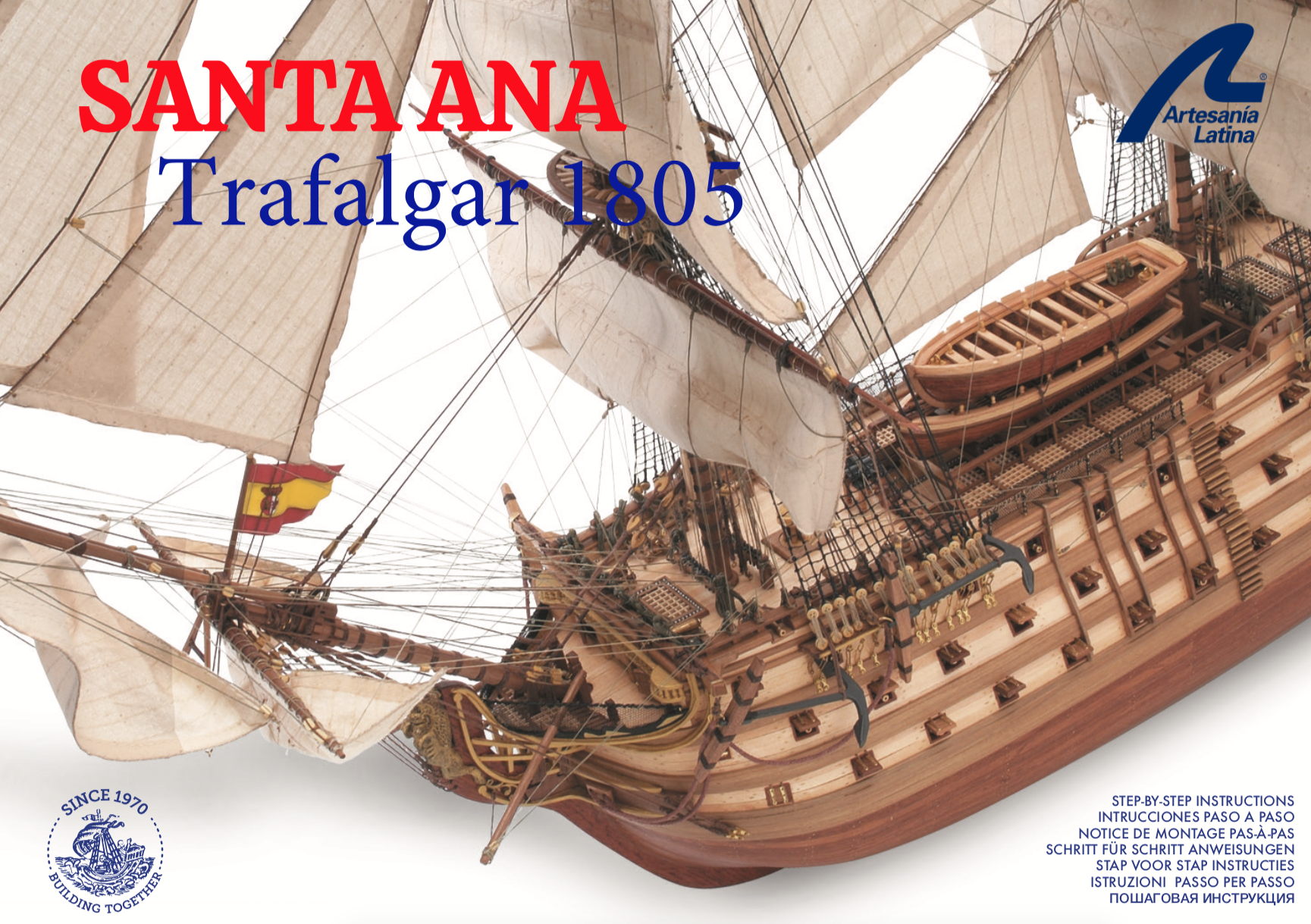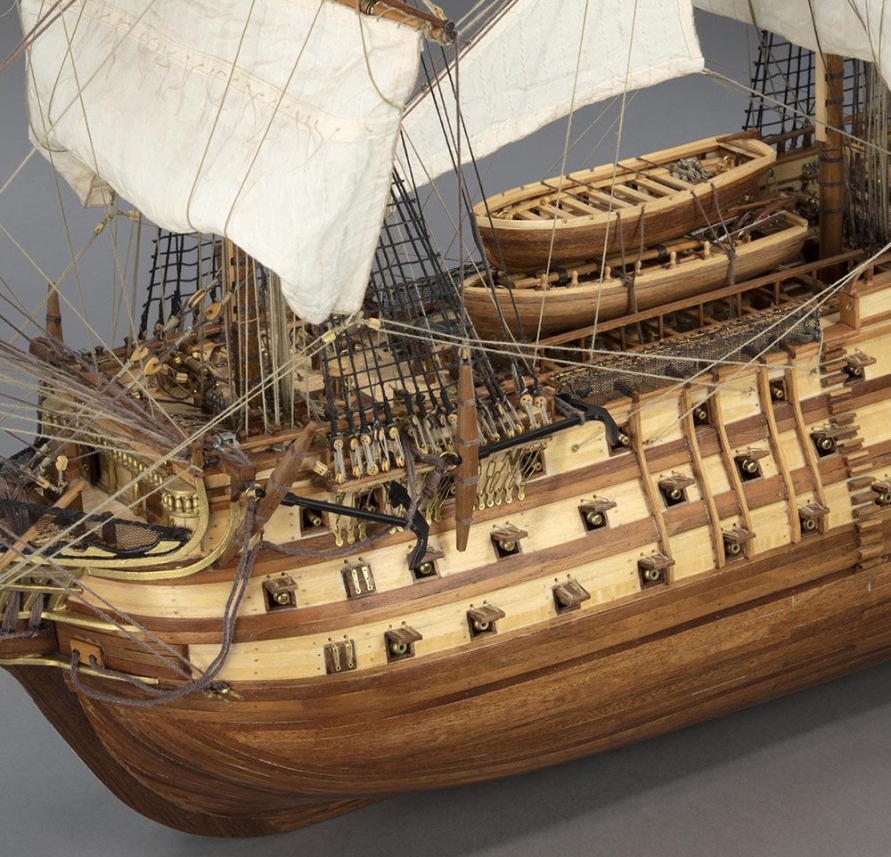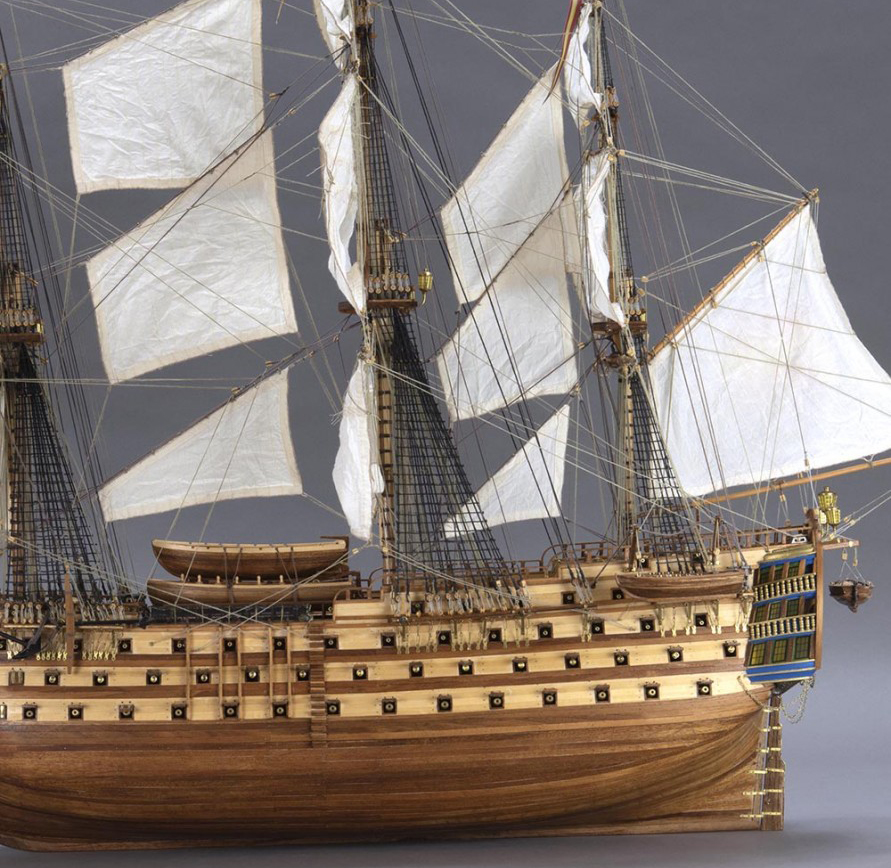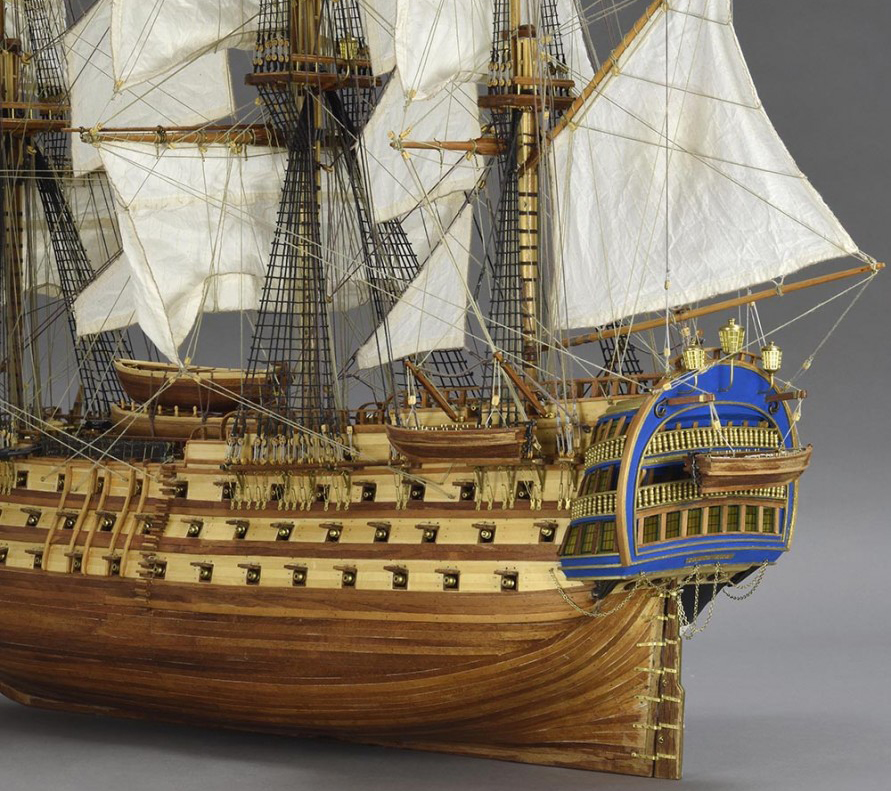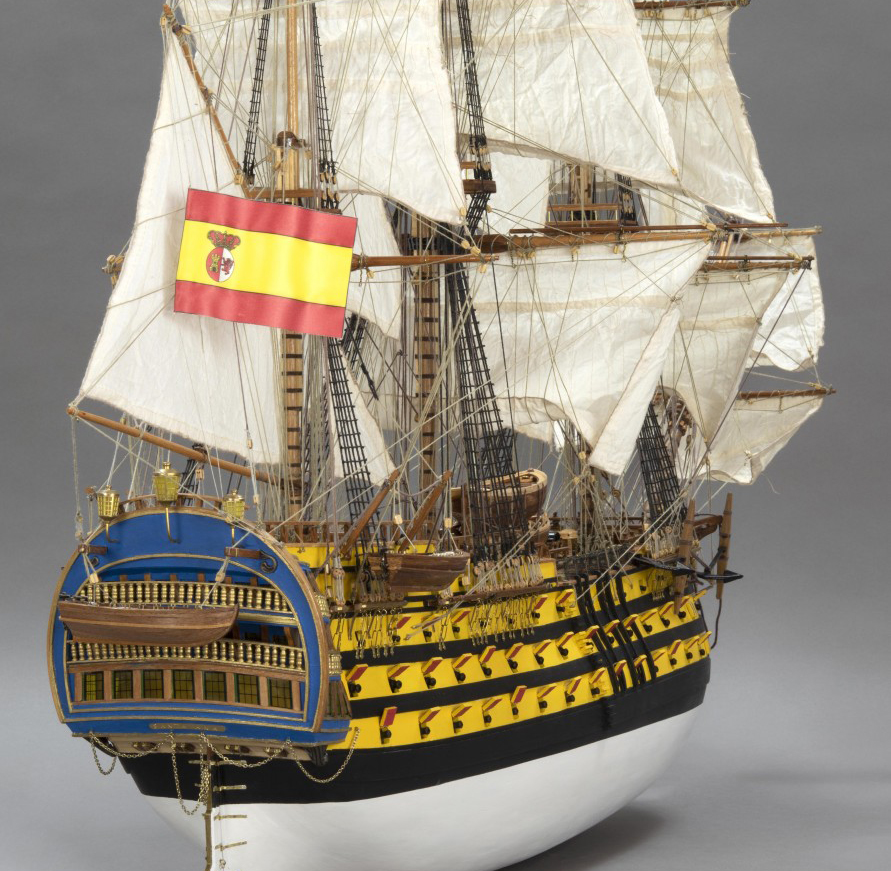We continue telling our modeler friends the history of a fundamental warship in its next journey. The time has come for the Spanish ship of the line Santa Ana in Trafalgar, the naval battle that pitted the Iberians against the English Navy. The Hispanic vessel departs from the Bay of Cádiz on October 20th 1805 to arrive at Trafalgar the next day.
Commanding the Santa Ana? Commander José de Gardoqui, with the help of Lieutenant General Ignacio María de Álava and a Franco-Spanish fleet led by Gallic Admiral Pierre-Charles Villeneuve and Lieutenant General Federico Gravina y Nápoli at the head of the ship Príncipe de Asturias. Of course, it should be noted that other important ships also accompany them. The vessels San Juan Nepomuceno with Cosme Damián de Churruca and Elorza, the Bahamas with Dionisio de Alcalá Galiano and the Santísima Trinidad with Baltasar Hidalgo de Cisneros. In addition, they are joined by numerous Spanish nobles and sailors.
SANTA ANA IN TRAFALGAR: DUEL AGAINST HMS ROYAL SOVEREIGN
The Santa Ana in Trafalgar maintains a historic duel against the British ship led by Vice Admiral Collingwood, the relevant HMS Royal Sovereign. It all begins during the morning of October 21st 1805, when the two fleets position themselves for the combat. In this sense, Admiral Pierre-Charles Villeneuve with the ship Bucentaure of 80 cannons lined up his ships to, in principle, avoid the confrontation. However, you must desist from maintaining the balance of peace. Two English naval formations in a line attack from the north and south. The famous 100-gun HMS Victory with Admiral Lord Horacio Nelson on deck and the other 100-gun Royal Sovereign with Vice Admiral Cuthbert Collingwood.
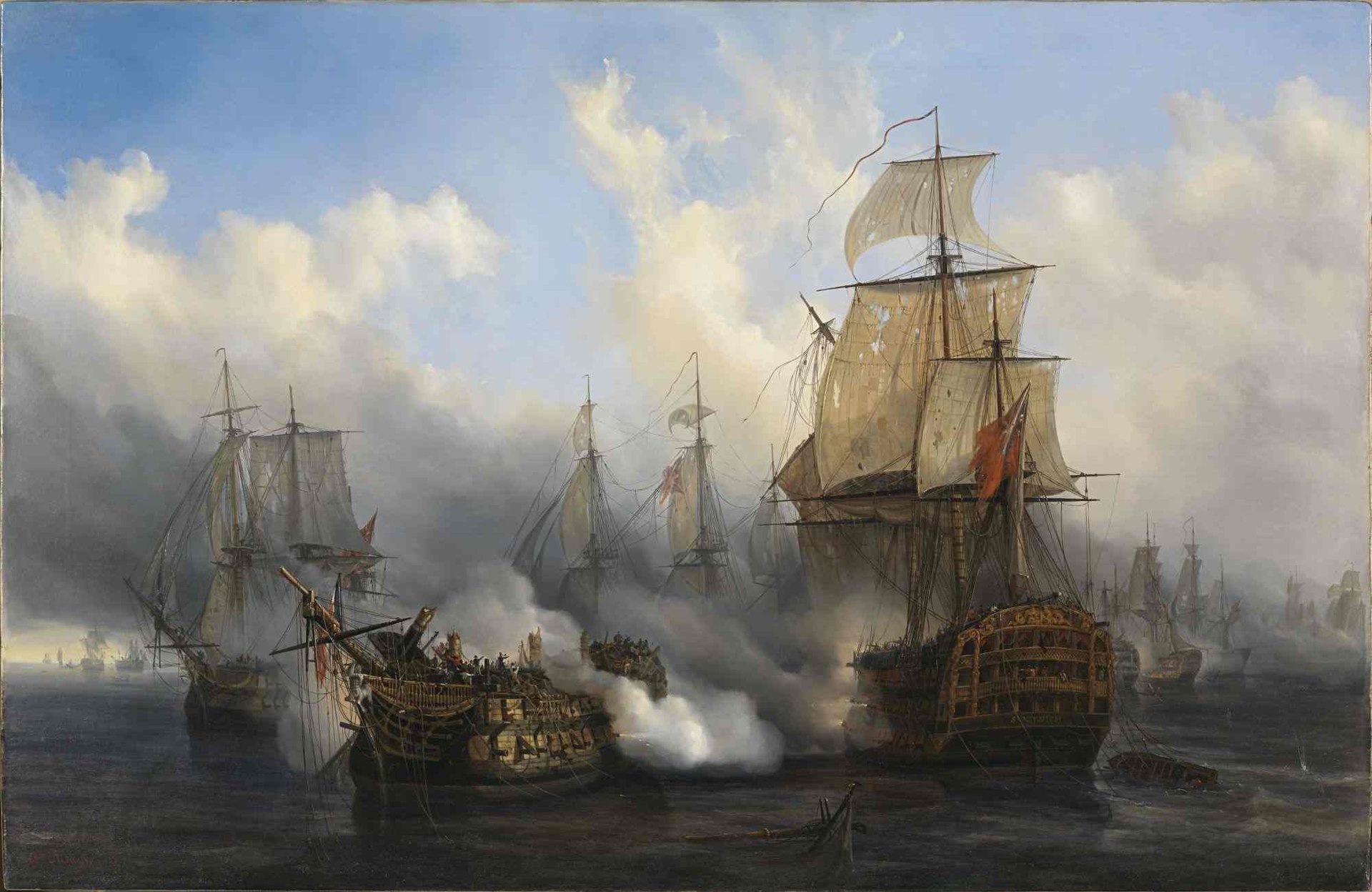
What are the first targets of the English? One, to divide the Franco-Spanish front into the vanguard and the center. The other, to separate the center from the rear. The Santa Ana in Trafalgar stands at the center of the battle line. It is then that he sees that the Royal Sovereign is approaching on his port side, so he decides to get out of formation to fight her. One of the greatest naval confrontations in history begins. They are the ones who light the fuse of the fight.
However, it is still not known for sure in which of the two warships shout fire first. Apparently, what is clear is that the Santa Ana in Trafalgar almost sank at the moment due to the fury and precision of the English guns. Other ships of the Spanish fleet become aware of the difficult situation that the Santa Ana ship of the line is going through and come to its aid.
CONSEQUENCES OF THE FIGHT IN TRAFALGAR BETWEEN SANTA ANA AND ROYAL SOVEREIGN
Consequences of all this? Huge damage to the Royal Sovereign that almost sank it when attacked from both flanks, although shortly after other English ships gave it a hand and she continued afloat. It is towed with deep difficulties to Gibraltar.
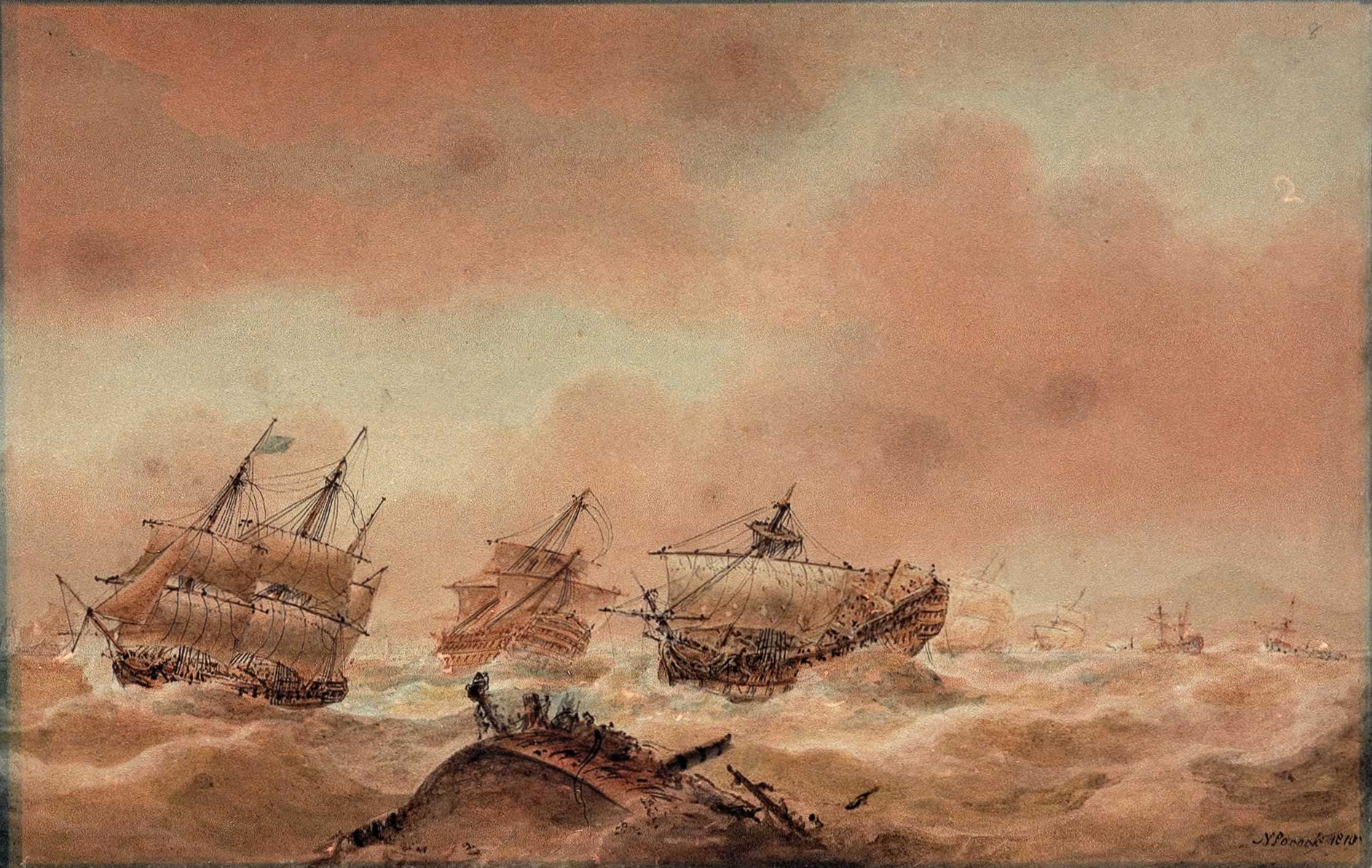
The Santa Ana in Trafalgar is left with extremely significant damage: the rudder is practically unusable, the stern almost does not exist and its decks are in broad daylight. The British take the ship, but the Spanish with the help of ship Rayo manage to raise their flag again. Known the terrible state of the ship, the French frigate Thetis tows it to Cádiz to fix itself. The La Carraca arsenal entered the dock on February 20th 1806, where it was completely repaired and even included a new copper lining. On December 9th Santa Ana is ready to sail again.

Human casualties? The battle of the Santa Ana in Trafalgar, unfortunately, led to the death of 97 crew members, in addition to injuring 141 more. Of course, this ship of the line stands as the first to manage to stop the English.
SAD END FOR A GIANT OF SPANISH AND WORLD NAVAL HISTORY
Beyond the Battle of Trafalgar, the Spanish ship of the line Santa Ana has little more life. Starting because in 1808, just at the beginning of the Spanish War of Independence, it was unable to participate in the confrontation and capture of Admiral Rosily’s Gallic squadron in Cádiz. Why? Because it is still being repaired in the arsenal, so a new naval tactical disappointment for Spain.
In August 1812, it sets sail for Havana, where it arrived in November together with the Prince of Asturias and the English Implacable in a pitiful state. Without drinking water or food, their crews arrive in a fatal state of health. The intention is to insure these ships during the war against the French, but the cost was very expensive.
In 1816, the Spanish warship sinks in the Havana arsenal due to lack of hull. Its maintenance work is zero. It is located in one of the parts of the port. As last services, the Santa Ana is destined to, at least, act as a pontoon and as a depot for sailors. As a curiosity, in 1834 you could still see the Santa Ana together with the Príncipe de Asturias, both sunk. It provided more than three decades of highly relevant service for Spain. The Santa Ana is a true naval icon.

WOODEN MODEL SHIP KIT SPANISH SHIP OF THE LINE SANTA ANA AT 1:84 SCALE
Relive the Battle of Trafalgar with us. Bring this Spanish naval bastion back to life by building the splendid wooden model of the Spanish ship of the line Santa Ana (22905-N). New and limited Trafalgar 1805 edition! Find out on these two videos!

